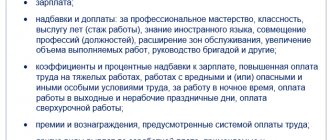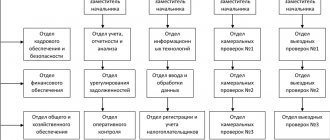Any entrepreneur, striving to increase his profit, feels the inevitable tax burden. It is natural to strive to reduce the cost of paying taxes, but it is important not to cross the line defined by law. However, the tax burden cannot be too low, because in this case there are almost certainly violations of tax legislation, which can be identified by a scheduled or unscheduled audit of the INFS.
What components does the tax burden consist of, what is its role in entrepreneurial activity, how to calculate it at different economic levels, whether an entrepreneur can do it on his own - all these questions are discussed below. Join us!
Absolute and relative tax burden
The concept of tax burden is used to establish the financial obligations of an entrepreneur to the state. It can be viewed as a relative or absolute value.
The amount burdening the entrepreneur due to his duties as a taxpayer, expressed in a certain figure, constitutes the absolute value of the tax burden.
Entrepreneurs need to know this figure in order to plan the ratio of expenses and income, optimize the business, and evaluate its profitability.
Tax authorities interpret the tax burden as a measure characterizing the funds that an entrepreneur allocates from business for his tax expenses. This approach is relative, as it includes many parameters taken into account by the Federal Tax Service.
That is why the relative designation of the tax burden better allows us to analyze the impact of the tax burden on the financial condition of the entrepreneur and the profitability of his business.
Sometimes the tax burden is identified with the effective tax rate - a percentage of the actual payment of a particular tax in the total tax base. When it comes to the tax burden for a specific tax, it is permissible to apply this definition, which is what is done in some regulations.
State documents
Since the tax burden ranks first among the criteria for selecting the “lucky” ones for an on-site tax audit, its documentary regulation relates primarily to documents issued by the Federal Tax Service. The relations between tax payers and regulatory authorities are regulated by the following acts:
- Order of the Federal Tax Service of the Russian Federation “On approval of the Concept of the planning system for on-site tax audits” dated May 30, 2007 No. MM-3-06/333 and its Appendix No. 3 - information data that is replenished and updated annually;
- Letter of the Federal Tax Service of the Russian Federation “On the work of commissions of tax authorities on the legalization of the tax base” dated July 17, 2013 No. AS-4-2/12722 contains a formula for calculating the tax burden for various types of taxes and special tax regimes.
NOTE! All this information is contained on the official website of the Federal Tax Service.
Tax burden and, as a consequence, on-site audit
When choosing a taxpayer for an on-site tax audit, control authorities always pay attention to the tax burden indicator. What is it, what are the risk factors, how to explain the reasons for the low tax burden and avoid negative consequences, read the article by our expert Oksana Smolanova.
The selection of taxpayers when planning on-site tax audits is carried out on the basis of the norms of Article 89 of the Tax Code of the Russian Federation[1], as well as publicly available criteria specified in the Concept for planning on-site tax audits, approved by Order of the Federal Tax Service of Russia dated May 30, 2007 No. MM-3-06/ [email protected ] [2]. One of the most important criteria is the level of tax burden. A taxpayer is included as a priority in the on-site inspection plan if its tax burden is below the average level for business entities in a particular industry (by type of economic activity).
In the article we will consider how the indicator of the tax burden of business entities affects the likelihood of assigning control measures by the tax authorities.
The concept of tax burden
The tax burden is one of the calculated economic indicators. It shows how much of a taxpayer's income comes from paying taxes. The taxpayer's tax burden is compared with the standard indicator in the industry in which he works (industry average). The indicators are updated annually before May 5 and posted on the official website of the tax service (clause 6[3] of the Order of the Federal Tax Service of Russia dated May 30, 2007 No. MM-3-06/ [email protected] ). Until the update, you can use data for the last previous year for which such indicators are approved. This conclusion follows from paragraph 2[4] of the Order of the Federal Tax Service of Russia dated September 22, 2010 No. ММВ-7-2/ [email protected]
The average tax burden by type of economic activity for 2022 is enshrined in Appendix 3[5] to Order of the Federal Tax Service of Russia dated May 30, 2007 No. MM-3-06/ [email protected] [6]. You can compare your tax burden with the industry average for your region using the Internet service of the tax service “Transparent Business” (Letter of the Federal Tax Service dated February 11, 2019 No. BA-4-1 / [email protected] [7]). But you need to take into account that the service does not include personal income tax in the calculation.
Low tax burden is a risk
A low tax burden, although a risk factor for committing a tax offense, does not mean that the taxpayer is included in the on-site tax audit plan by default. A low tax burden in a particular period may be due to understandable reasons, including changes in the economic situation in the country. How this happened in 2020 due to the spread of COVID-19.
When planning on-site audits, tax authorities evaluate not only the tax burden of the current period, but also the dynamics of changes in this indicator. A decrease in the level of tax burden over several periods may indicate the use of tax evasion schemes, and therefore the dishonesty of the taxpayer. If the level of taxes paid turned out to be low in one of the periods, but subsequently there is a tendency to increase it, we can say that the low figures are due to temporary difficulties.
In addition, the tax burden indicator is assessed by tax authorities in conjunction with other criteria given in the concept[8], as well as other information at their disposal. Therefore, an organization may come to the attention of the tax authority even if its actual tax burden corresponds to the industry average, but there are other signs indicating a violation of tax legislation.
Explanations to the tax office
In practice, most often the taxpayer is asked to explain the reasons for the low tax burden. Written explanations are drawn up in any form indicating the reasons for the low tax burden.
Please note that submitting such explanations is a taxpayer’s right, not an obligation (clause 7, clause 1, article 21 of the Tax Code of the Russian Federation[9]). If the organization indicates objective reasons in its explanations, it may avoid further adverse consequences. But if he does not provide an explanation, then it will most likely be included in the on-site inspection plan (section 4[10] of Appendix 1 to Order of the Federal Tax Service of Russia dated May 30, 2007 No. MM-3-06/ [email protected] ).
Usually, before making a decision to schedule an on-site audit, the tax authority requests clarification from the taxpayer regarding the reasons for the low tax burden. If the tax authority is satisfied with the explanations, further inspection may not follow.
When sending clarifications, taxpayers can justify deviations in terms of the tax burden, as well as provide copies of primary documents confirming the correctness of tax calculations.
The reasons for reducing the tax burden may be: development of new types of activities; expansion of core activities; a noticeable increase in trade inventories; purchase of new machinery and equipment; conducting several types of activities, the standard values of the tax burden of which differ significantly (calculations can be made based on aggregated data); regional and industry specifics; increase in purchase prices from suppliers; reduction of sales prices in order to stimulate demand.
The text of the explanation to the tax authorities on the issue of reducing the tax burden may be as follows[11]:
Based on the fact that the tax burden of Alpha LLC has been reduced for 2022 compared to the industry average, we explain that the management of the organization decided to reduce selling prices for goods sold by 10% from August 1, 2022. This measure was taken based on the results of an analysis of the situation on the sales market in order to attract buyers and gain a competitive advantage.
The price reductions had a negative impact on the amount of revenue generated in the second half of 2022. At the same time, the organization’s expenses related to core activities increased by 3% compared to the first half of 2022. As a result, these factors led to a reduction in the amounts of income tax and VAT payable to the budget.
Thus, to summarize, we note once again that a low tax burden does not mean that the organization will necessarily be held accountable and additional taxes will be assessed. Negative consequences are possible only based on the results of a tax audit and detection of tax offenses (clause 50 of the Resolution of the Plenum of the Supreme Arbitration Court of the Russian Federation dated July 30, 2013 No. 57[12]).
At the same time, in order to avoid negative consequences, taxpayers are recommended to implement internal measures to control the tax burden. In particular, monitor the indicator over time and relative to standard values and plan financial flows in order to possibly eliminate significant deviations.
If, during the implementation of internal control, a low level of tax burden is revealed, then this probably indicates that business activities are carried out with the risk of committing tax offenses. In this case it is necessary:
— establish and analyze the reasons that influenced the low level of tax burden;
— independently clarify tax obligations by submitting updated tax returns.
We also recommend checking the main OKVED, which is listed in the Unified State Register of Legal Entities. When calculating industry average tax burden indicators, regulatory authorities determine whether an organization belongs to an industry specifically according to OKVED. If the main OKVED does not correspond to the actual type of activity, then the organization needs to make changes to the register.
[1] Art. 89 of the Tax Code of the Russian Federation (part one) dated July 31, 1998 No. 146-FZ (as amended on July 20, 2020) {ConsultantPlus}.
[2] Order of the Federal Tax Service of Russia dated May 30, 2007 No. MM-3-06/ [email protected] (as amended on May 10, 2012) “On approval of the Concept of the planning system for on-site tax audits” {ConsultantPlus}.
[3] Order of the Federal Tax Service of Russia dated May 30, 2007 No. MM-3-06/ [email protected] (as amended on May 10, 2012) “On approval of the Concept of the planning system for on-site tax audits” {ConsultantPlus}.
[4] Order of the Federal Tax Service of the Russian Federation dated September 22, 2010 No. MMV-7-2/ [email protected] “On amendments to the Order of the Federal Tax Service of Russia dated May 30, 2007 No. MM-3-06/ [email protected] “On approval of the concept of the planning system on-site tax audits" {ConsultantPlus}.
[5] Order of the Federal Tax Service of Russia dated May 30, 2007 No. MM-3-06/ [email protected] (as amended on May 10, 2012) “On approval of the Concept of the planning system for on-site tax audits” {ConsultantPlus}.
[6] Order of the Federal Tax Service of Russia dated May 30, 2007 No. MM-3-06/ [email protected] (as amended on May 10, 2012) “On approval of the Concept of the planning system for on-site tax audits” {ConsultantPlus}.
[7] Letter of the Federal Tax Service of Russia dated February 11, 2019 No. BA-4-1/ [email protected] “On the placement of the service “Tax calculator for calculating the tax burden”” {ConsultantPlus}.
[8] Order of the Federal Tax Service of Russia dated May 30, 2007 No. MM-3-06/ [email protected] (as amended on May 10, 2012) “On approval of the Concept of the planning system for on-site tax audits” {ConsultantPlus}.
[9] Art. 21 of the Tax Code of the Russian Federation (part one) dated July 31, 1998 No. 146-FZ (as amended on July 20, 2020) {ConsultantPlus}.
[10] Order of the Federal Tax Service of Russia dated May 30, 2007 No. MM-3-06/ [email protected] (as amended on May 10, 2012) “On approval of the Concept of the planning system for on-site tax audits” {ConsultantPlus}.
[11] Form: Explanations to the tax authority regarding the reduction of the taxpayer’s tax burden (filling sample) (prepared by ConsultantPlus specialists, 2020) {ConsultantPlus}.
[12] Resolution of the Plenum of the Supreme Arbitration Court of the Russian Federation dated July 30, 2013 No. 57 “On some issues arising when arbitration courts apply part one of the Tax Code of the Russian Federation” {ConsultantPlus}.
Who needs it and why?
Determining how much money is spent on taxes is an important point that determines the activities of economic entities at various levels:
- taxpayers themselves can assess the effectiveness of their activities, determine how great the risk of a tax audit is, decide on the optimal tax regime, and predict further actions;
- The federal tax service uses these figures to design its regulatory activities, and also has the opportunity to influence the modernization of the tax system as a whole;
- The Ministry of Finance and other economic government agencies, based on tax burden indicators, study the economic situation at the regional and state levels, planning and forecasting the country's future financial policy.
What kind of load will we consider?
The mentioned documents, in addition to informational information, can give entrepreneurs the opportunity to independently calculate the tax burden using specially developed formulas.
The first document (order of the Federal Tax Service) provides a general formula that will help in calculating the total tax burden , that is, the share of funds that were accrued for payment on the basis of tax returns in relation to the amount of revenue recorded by Goskomstat (in the income statement) .
IMPORTANT! Personal income tax is included in the calculation of such a load, but VAT is not. At the same time, contributions to extra-budgetary funds are excluded from the calculations, since not all of them are supervised by the Federal Tax Service.
The second document (letter from the Federal Tax Service) contains several calculation formulas for different taxes and certain special tax regimes.
Excessive tax burden and its consequences
Taxpayers in the Russian Federation have an obligation to pay a fairly large number of taxes. Even individuals pay not only personal income tax, but also transport, land taxes, and property taxes. Organizations have a much longer list.
In addition to taxes, there are also insurance contributions to extra-budgetary funds. This does not directly relate to the tax burden, but it is also an obligation with all the ensuing consequences.
An increase in taxes should theoretically increase budget revenues. But in life it turns out that an excessive tax burden can stifle any activity. This means that there will be no one to pay taxes to the budget. Consequently, budget revenues are likely to decrease.
A striking example of how an increase in the burden of mandatory payments does not lead to an increase in income, but to a curtailment of the activities of entrepreneurs, is the attempt to increase insurance premiums for individual entrepreneurs in 2014. After such a maneuver, many individual entrepreneurs formally closed. At the same time, they continued their activities, but unofficially. As a result, the planned increase in budget revenues did not work out.
Formula for calculating the tax burden
Cumulative load
The total tax burden is calculated on a very average basis. Its formula is extremely simple: it is a quotient of tax deductions and revenues. In a more refined version, it might look like this:
НН = СнОг x 100% / СВг - VAT,
Where:
TN – tax burden; SnOg – the amount of taxes paid according to the report in the tax year; СВг – the amount of revenue according to accounting documents corresponding to the tax annual period; it does not include VAT and excise taxes. This technique was developed and recommended for use by the Ministry of Finance of the Russian Federation.
The load will be considered low and will attract close attention from the tax authorities if the calculated indicator is less than the industry average values updated annually on the Federal Tax Service website.
FOR YOUR INFORMATION! There are other methods for calculating the tax burden in the aggregate, proposed in various economic publications.
EXAMPLE. Let's calculate the workload of the conditional Dolgozhdan LLC, which is engaged in the hotel business.
The Federal Tax Service has determined the average load level for this type of business as 9%.
The company's revenue, according to the financial report for 2015, amounted to 40 million rubles. Tax returns filed by the firm this year showed the following tax deductions:
- VAT – 1.1 million rubles;
- income tax – 1.2 million rubles;
- corporate property tax – 520 thousand rubles;
- transport tax – 250 thousand rubles.
Personal income tax was withheld from employee salaries in the amount of 750 thousand rubles. Insurance premiums, as well as transfers to the Pension Fund, have no significance for this calculation.
Tax burden of Dolgozhdan LLC : 1,100,000 + 1,200,000 + 520,000 + 250,000 + 750,000 = 2,625,000 rubles. Divide by the profit indicator: 2,625,000 / 40,000,000 = 0.065. Multiply by 100%, we get 6.5%.
The calculated result is less than the average (9%) determined by the Federal Tax Service for this business sector. Therefore, Dolgozhdan LLC will be included in the plan of on-site tax audits, or its employees will be called to the tax office to give explanations.
How the Federal Tax Service evaluates the tax burden of an enterprise
To assess the level of the indicator, annually before May 5, the Federal Tax Service publishes on its official website average indicators for sectors of the economy for the previous year (Appendix 3 to Order No. MM-3-06 / [email protected] ). It is with these industry average values that the tax authorities will compare the results of the analysis. Each taxpayer can view the latest information on the Federal Tax Service website.
Another significant criterion for assessing the correctness of the amounts of taxes paid is the share of VAT deductions (clause 3 of the Criteria). It is calculated additionally. The share of deductions should not exceed 89% of the accrued VAT.
Load for a specific tax
Most often, the tax burden is calculated using VAT and income tax.
Level of income tax burden
The Federal Tax Service will be alert if it is below the following indicators:
- for trade enterprises – less than 1%;
- for other organizations, including those involved in production and contracting - less than 3%.
It is calculated using the following formula:
ННп = Нп / (Др + Двн),
where: ННп – tax burden for income tax; Np – income tax based on the results of the annual declaration; Др – income from sales, determined according to the profit declaration data; Dvn – other (non-operating) income of the organization according to the same declaration. The result obtained is multiplied by 100%.
Level of tax burden for VAT
The Federal Tax Service recognizes the level of tax burden for VAT as low if for all four quarters of the reporting year the amount of tax deductions for VAT amounts to 89% or more of the total amount of this tax.
There are several ways to calculate the VAT burden.
- Divide the amount of VAT paid (NVAT) into the tax base indicators in accordance with section 3 of the corresponding declaration, focusing on the state of the Russian market (NBrf): Tax
Tax on VAT = NNDS / NBRf - Find the ratio of the amount of VAT according to the declaration (NVAT) to the total tax base, which includes both indicators of the Russian market and the export market (NBtot):
NV for VAT = NNAT / Nbtot.
What taxes are included in the calculation?
When calculating the indicator, all taxes calculated by the company both as a taxpayer and as a tax agent are taken into account:
- at a profit;
- for property, land, transport;
- VAT;
- Personal income tax.
There is no need to take into account customs duties and import VAT.
Previously, the calculations also did not take into account the amount of insurance premiums. This was explained by the fact that the administration of these payments was carried out by extra-budgetary funds: the Pension Fund, Compulsory Medical Insurance and the Social Insurance Fund. From January 1, 2017, control over the calculation and payment of insurance premiums was transferred to the Federal Tax Service. Therefore, starting from 2022, the organization’s tax burden is determined taking into account insurance premiums. But their amount is not included in the calculation of the burden on fiscal fees, and a separate indicator of the fiscal burden on insurance premiums is calculated.
Nuances of the tax burden for different types of entrepreneurs
- IP . An individual entrepreneur must calculate the tax burden for personal income tax. To do this, you need to divide the indicator in your declaration by the 3-NDFL given in the declaration.
- Payers of the simplified tax system must take the level of their load accrued in accordance with the declaration and divide it by income in accordance with 3-NDFL.
- Entrepreneurs on the unified agricultural tax divide, accordingly, their tax indicators by the amount of income according to the 3-NDFL declaration.
- Those who chose OSNO add up VAT and income tax and find the ratio of the amount received to the total revenue reflected in the income statement.
IMPORTANT INFORMATION! If a businessman, in addition to those listed, pays other taxes, for example, land, water, property, etc. (except for personal income tax), then all these taxes will participate in the calculation of the total burden.
If the level of the tax burden turns out to be low, this does not mean mandatory penalties: they can only be imposed based on the results of an audit, the risk of which naturally increases in such a situation.









